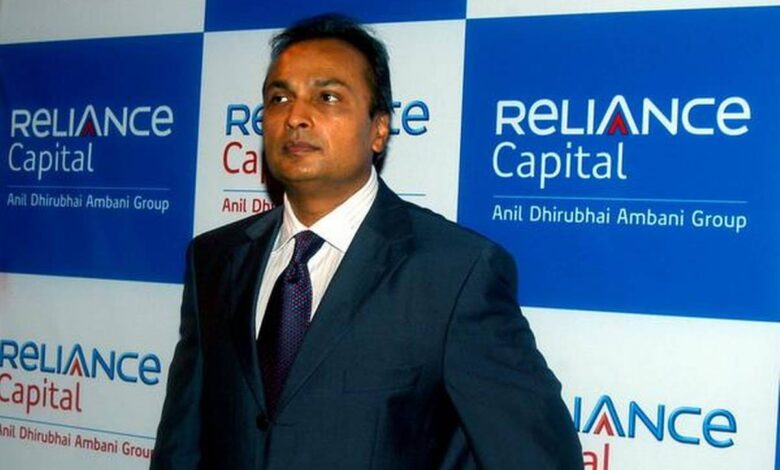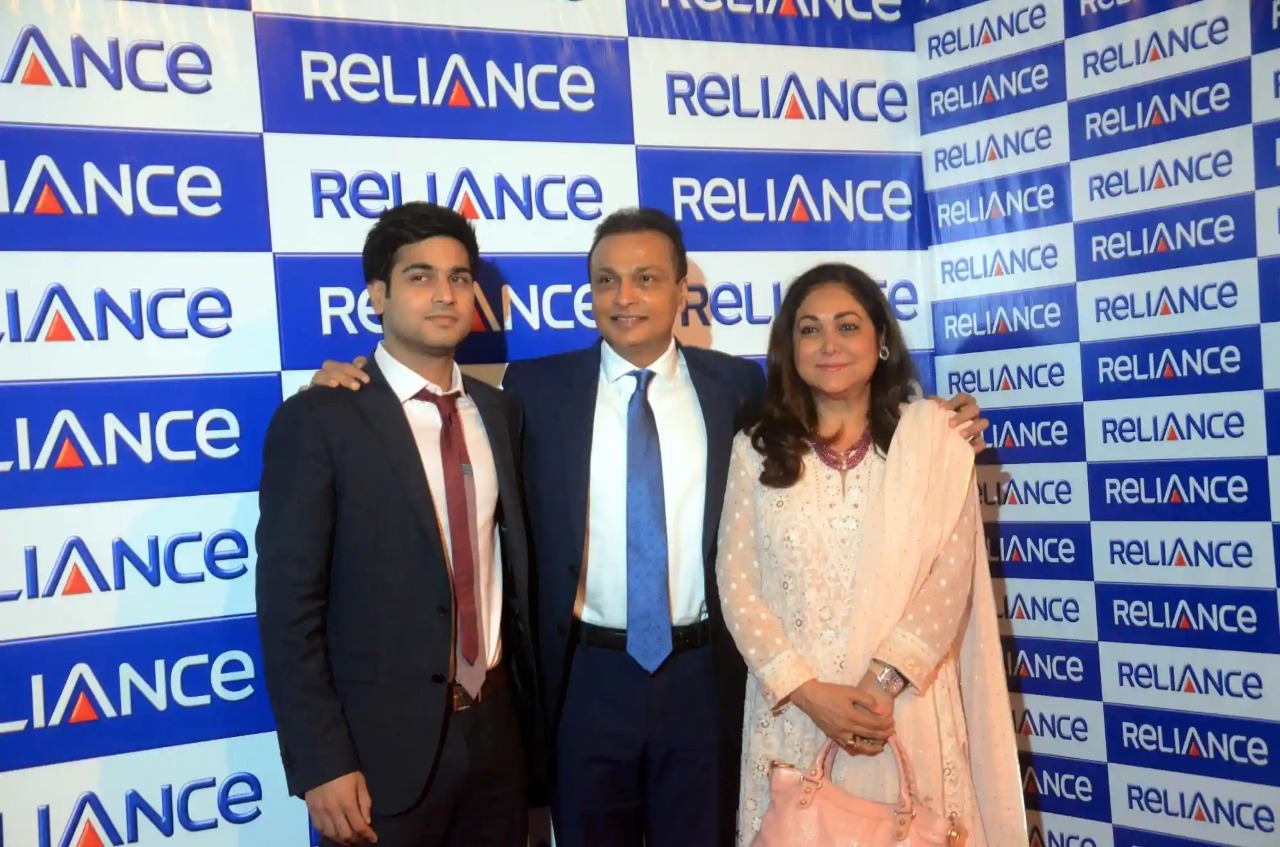NCLT Greenlights Hinduja Group’s Revival Blueprint For Anil Ambani’s Reliance Capital; What Went Wrong With Anil Ambani?
NCLT's recent approval of Hinduja Group's revival plan for Reliance Capital, a company previously promoted by Anil Ambani, marks a significant milestone in the ongoing events of the company's insolvency proceedings. This decision, following an application by Reliance Capital's administrator in Mumbai, paves the way for the acquisition of the troubled firm by IndusInd International Holdings Ltd. Anil Ambani, the flamboyant billionaire, emerged as a prominent figure in India Inc. following the public split of his father Dhirubhai's vast Reliance business empire. As the younger son, Anil was entrusted with the new-age businesses, holding immense potential for the future, while his elder brother Mukesh assumed responsibility for the legacy Reliance companies. Surpassing his brother, Anil amassed a staggering net worth of $42 billion by 2008, securing the position of the sixth richest individual globally. Despite being hailed as the natural successor to uphold Dhirubhai Ambani's legacy, the dynamics have shifted drastically over the past decade and a half. Today, Mukesh Ambani stands as Asia's wealthiest individual, boasting an incomprehensible net worth of Rs 7,99,893 crore ($96.9 billion). In sharp contrast, Anil Ambani candidly admitted approximately four years ago that his net worth had plummeted to zero, illustrating the remarkable reversal of fortunes between the two brothers.

NCLT has given its approval to Hinduja Group’s revival strategy for Reliance Capital, a company promoted by Anil Ambani, following an application by the administrator of Reliance Capital in Mumbai.
The move permits the acquisition of the Anil Ambani-promoted firm by IndusInd International Holdings Ltd through the insolvency resolution process.
Justice Virendra Singh Bisht and technical member Prabhat Kumar, constituting the division bench, issued an oral order endorsing the plan, with a detailed written order awaited.
Last year, on June 29, Reliance Capital’s Administrator Nageswara Rao Y disclosed that the e-voting on resolution for the plan’s approval concluded.
However, financial specifics were not revealed in the announcement made to the stock exchange. Ashish Pyasi, Partner at Aendri Legal, highlighted the significance of this approval, positioning it alongside other notable financial institutions like DHFL and SREI that underwent resolution under the code.
Upon approval, all creditors and stakeholders are slated to be repaid as per the approved resolution plan. Pyasi also mentioned the formation of a monitoring committee for overseeing plan implementation, bridging any gap between approval and complete satisfaction of plan terms.

This decision is contextualized within the legal wrangle involving Shardul Shroff, representing Torrent Investments, who petitioned the Supreme Court in October of the previous year to expedite proceedings regarding the company’s application to halt the second challenge mechanism in the corporate insolvency resolution process (CIRP) for Reliance Capital.
The core issue revolves around Hinduja Group’s bid, which was submitted 24 hours post the auction deadline, surpassing the offer made within the stipulated time by Torrent Investments.
Despite being the highest bidder initially, Torrent refrained from submitting a final plan in the second round. The lenders’ preference for IIHL’s plan was evident when 99% of them voted in favour of it in June.
As of June 8, 2023, the administrator had acknowledged claims amounting to Rs 25,345 crore from lenders.
Torrent Investments has contested NCLAT’s interpretation of Regulation 39(1A) of the Insolvency and Bankruptcy Board of India (IBBI), arguing that it doesn’t curtail lenders’ rights to negotiate financials further. Despite its conclusion, this challenge mechanism is believed not to breach Regulation 39(1A) of the CIRP Regulations.
Regulation 39(1A) stipulates that bidders must formulate a resolution plan in line with the bankruptcy code and submit it to the RP within the specified time frame. The tribunal had authorized the initiation of an insolvency process against the debt-laden financier in November 2019.

The Eclipse
Reliance Capital, Anil Ambani’s financial services company offering various financial products, faced dissolution of its board by RBI on November 29, 2021, owing to payment defaults and significant governance issues.
The company, which provided personal and business loans, insurance, investments, among other services, succumbed to bankruptcy in 2021.
Anil Ambani, once among India’s wealthiest individuals, has been compelled to sell his company, with its value plummeting from Rs 93,851 crore in 2018 to bankruptcy in recent years.
What Went Wrong For Anil Ambani?
Anil Ambani’s downfall has been marked by a series of scandals, including allegations of involvement in the 2G Scandal investigated by the CBI.
He was accused of orchestrating the setup of Swan Telecom to obtain 2G licenses; Ambani also faced unpaid dues to Ericsson for services rendered to Reliance Communications. A Non-compliance with the payment of dues, totalling Rs 580 crore, could have led to three-month imprisonment, a situation mitigated by his brother Mukesh Ambani’s intervention.
Further troubles ensued with outstanding debts to three Chinese banks, including the Industrial and Commercial Bank of China Limited, China Development Bank, and Exim Bank of China, amounting to over Rs 5,276 crore; thus culminated in legal proceedings in the UK, significantly tarnishing Anil Ambani’s reputation.
The lack of vision and focus in Ambani’s ventures became evident with the Reliance Power IPO, which oversubscribed 73 times but failed to sustain its initial market hype.

Despite the massive capital raised, the share price never approached its issue price, leading to a loss of roughly $9 billion in market capitalization and substantial investor wealth.
Anil Ambani’s foray into the entertainment industry, highlighted by the acquisition of multiplex chains Adlabs in 2005, initially positioned him as a major player in the sector with nearly 700 screens nationwide.
However, mounting debts forced Reliance Entertainment to divest numerous screens, signalling a significant setback in its business endeavours.
Amid shrinking businesses and mounting debts, mergers became a strategy for debt reduction.
Reliance Power, formerly Reliance Energy Limited, merged with Vidharbha Industries Power, subsequently acquired by the Adani Group, receiving a low credit rating from ICRA in August 2019.
Likewise, Reliance Natural Resources Limited was also merged with Reliance Power, reflecting the consolidation efforts.
Anil Ambani’s retreat from directorship positions in Reliance Power and Reliance Infrastructure, along with his resignation from the Rajya Sabha, emphasized his diminishing influence in corporate and political spheres.
His admission in a London court in 2020 that his net worth was zero, considering his liabilities, encapsulated the extent of his financial downfall, signalling a sharp contrast from his previous stature as a prominent industrialist.

The Riches To Rags Story
The rise and fall of Anil Ambani epitomizes the unpredictable trajectory of fortune in the world of business.
Once hailed as the shining star of India Inc. following the division of his father Dhirubhai’s colossal Reliance empire, Anil inherited the promising new-age businesses while his elder brother Mukesh took charge of the legacy Reliance companies.
Soon surpassing Mukesh in wealth, Anil soared to the pinnacles of success, commanding a staggering net worth of $42 billion by 2008, positioning him as the sixth richest individual globally.
At that zenith, Anil was perceived as the natural successor to uphold Dhirubhai’s illustrious legacy, poised to lead Reliance into a new era.
However, the tides of fortune have shifted dramatically over the ensuing decade and a half.
Today, Mukesh Ambani reigns as Asia’s wealthiest individual, boasting an unparalleled net worth of Rs 7,99,893 crore ($96.9 billion).
In contrast, Anil’s fortunes have taken a nosedive, with him famously declaring just a few years ago that his net worth had dwindled to zero.



